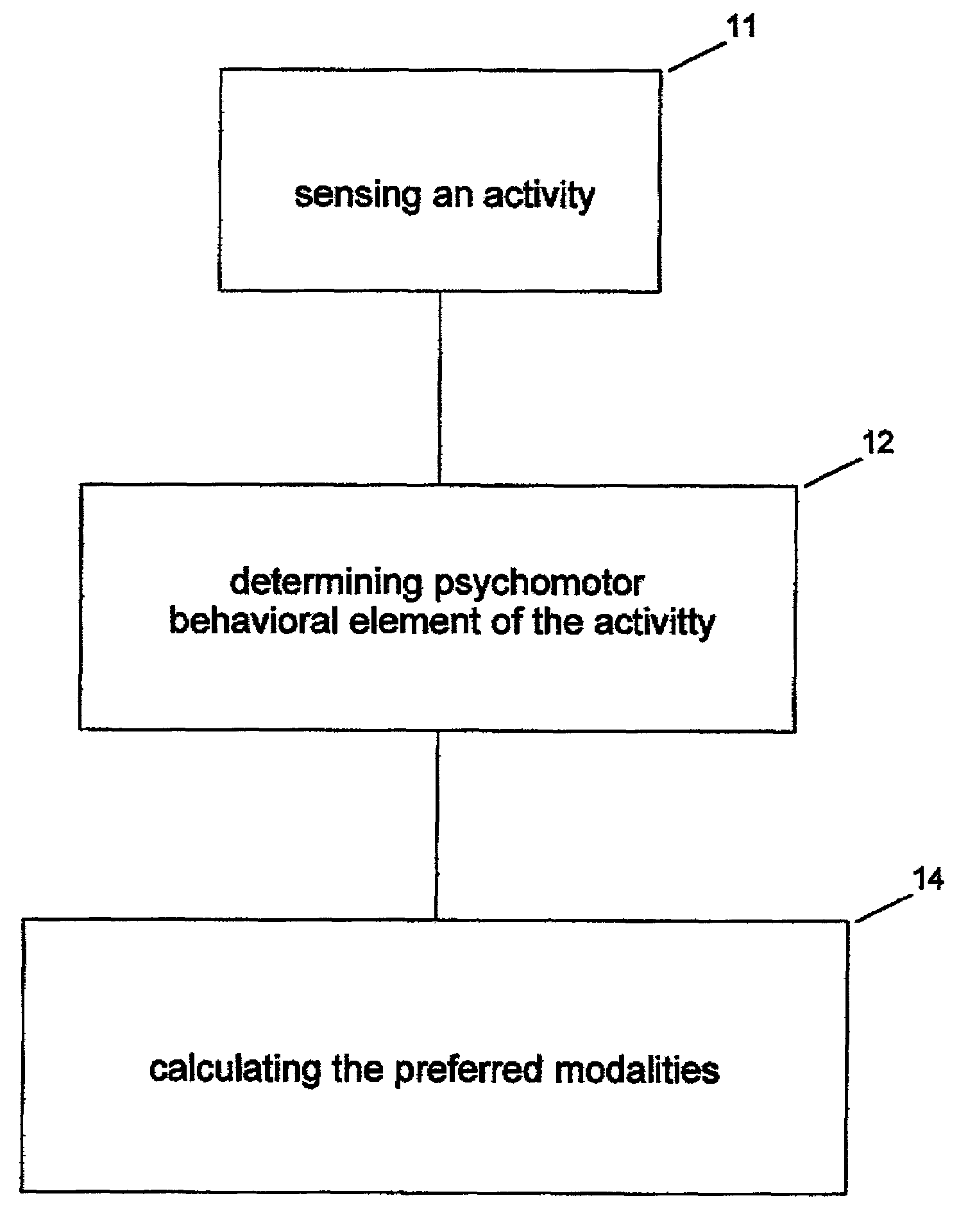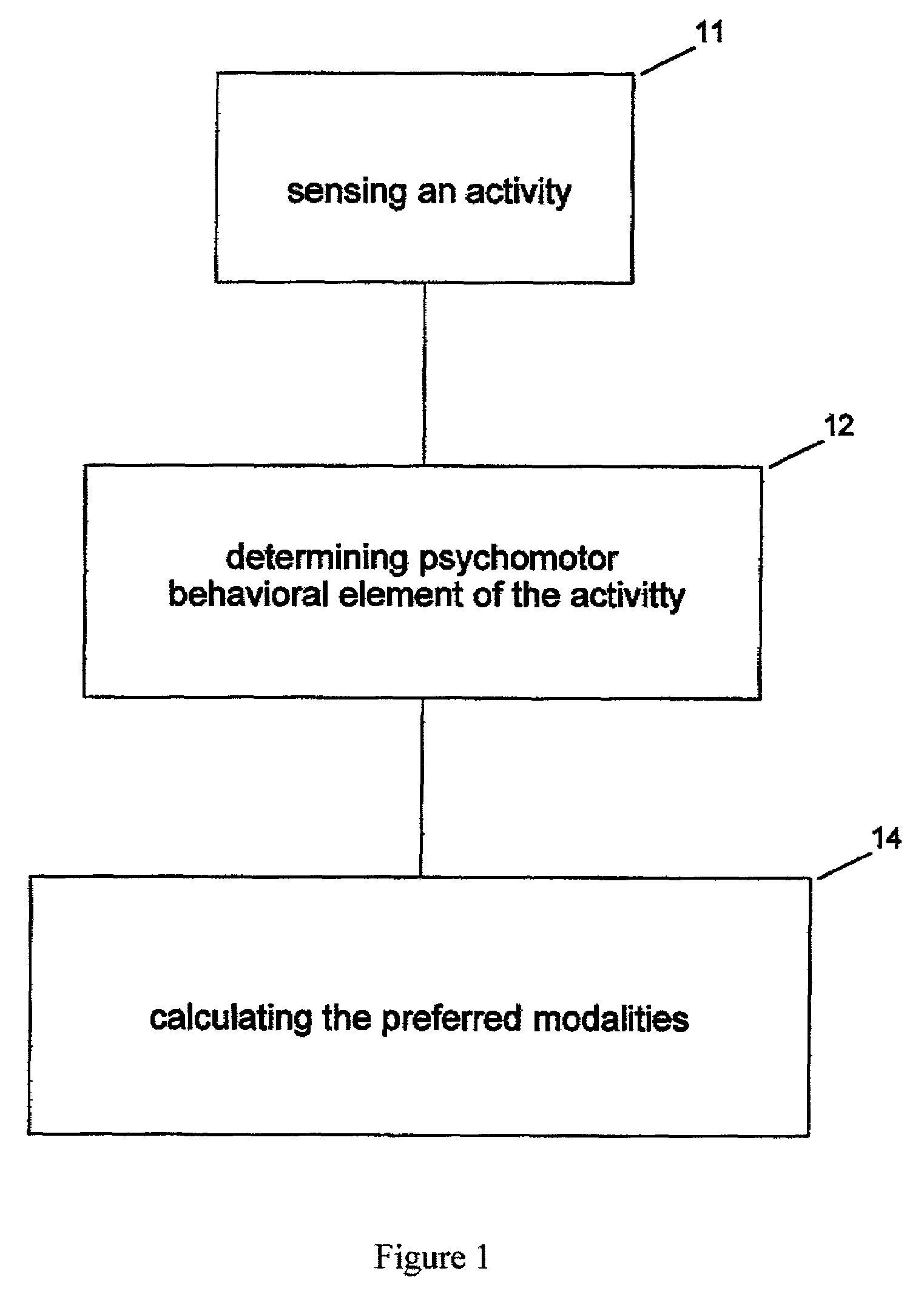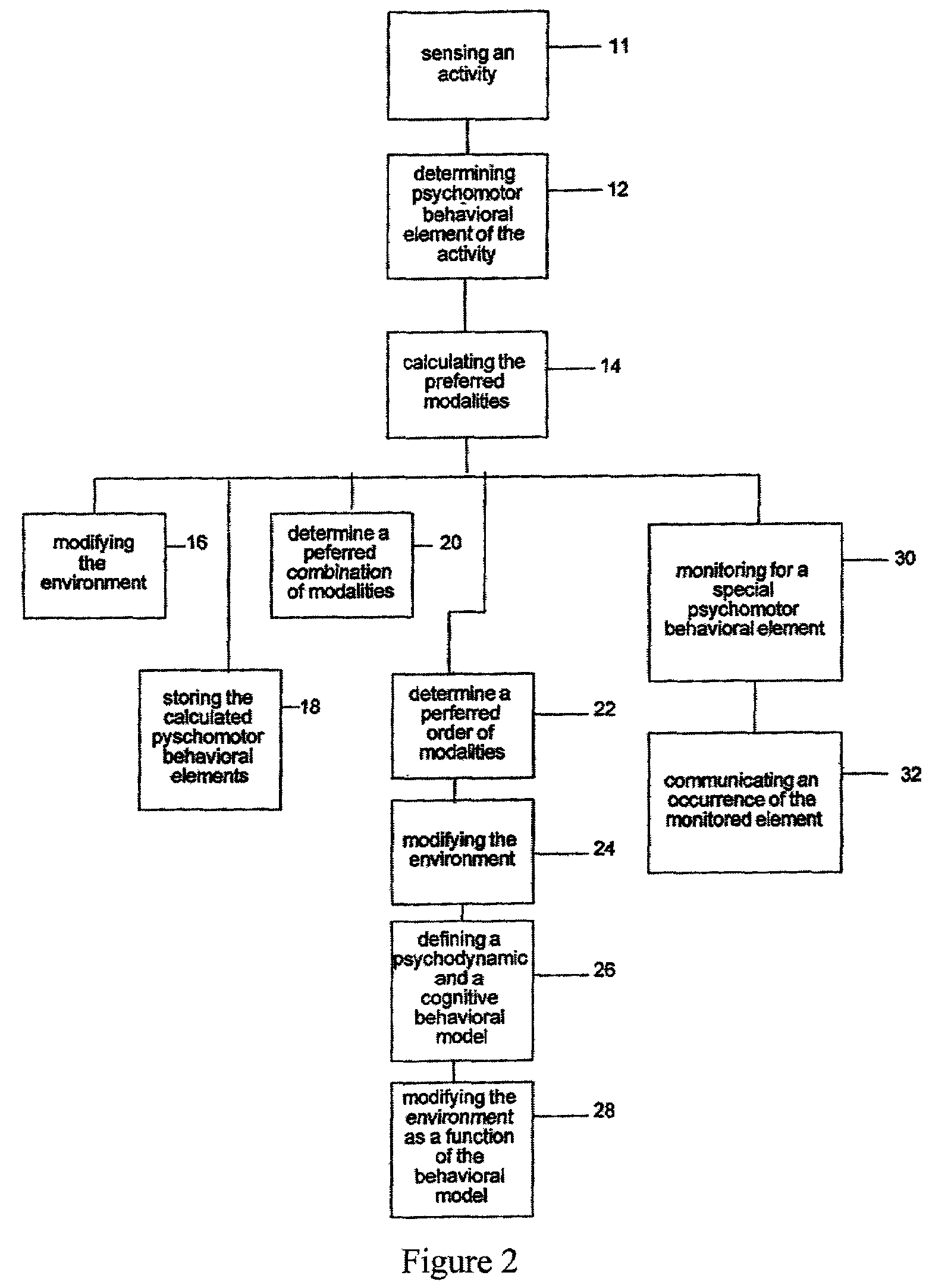Programable method and apparatus for real-time adaptation of presentations to individuals
- Summary
- Abstract
- Description
- Claims
- Application Information
AI Technical Summary
Benefits of technology
Problems solved by technology
Method used
Image
Examples
Embodiment Construction
[0027]The present invention uses psychometrics, a concept related to biometrics except that the technology relates to a person's thought patterns as opposed to biological traits. The difference allows psychometrics to generate value in applications presently addressed by biometrics as well as applications for which biometrics is too limited. Therefore the detailed description of the claimed invention is briefly prefaced with an enabling description of biometrics as it relates to one of many applications.
Psychometrics
[0028]Psychometrics relies on principles from psychomotor research. One application of the present invention combines psychometrics and the latest in web technologies to link what happens in the viewer's mind to what happens to the mouse and keyboard to what happens to the cursor to what happens on the screen. The following definitions establish the context with which to understand the present invention.[0029]1) The person sitting at their computer, browsing a website, i...
PUM
 Login to View More
Login to View More Abstract
Description
Claims
Application Information
 Login to View More
Login to View More - R&D
- Intellectual Property
- Life Sciences
- Materials
- Tech Scout
- Unparalleled Data Quality
- Higher Quality Content
- 60% Fewer Hallucinations
Browse by: Latest US Patents, China's latest patents, Technical Efficacy Thesaurus, Application Domain, Technology Topic, Popular Technical Reports.
© 2025 PatSnap. All rights reserved.Legal|Privacy policy|Modern Slavery Act Transparency Statement|Sitemap|About US| Contact US: help@patsnap.com



